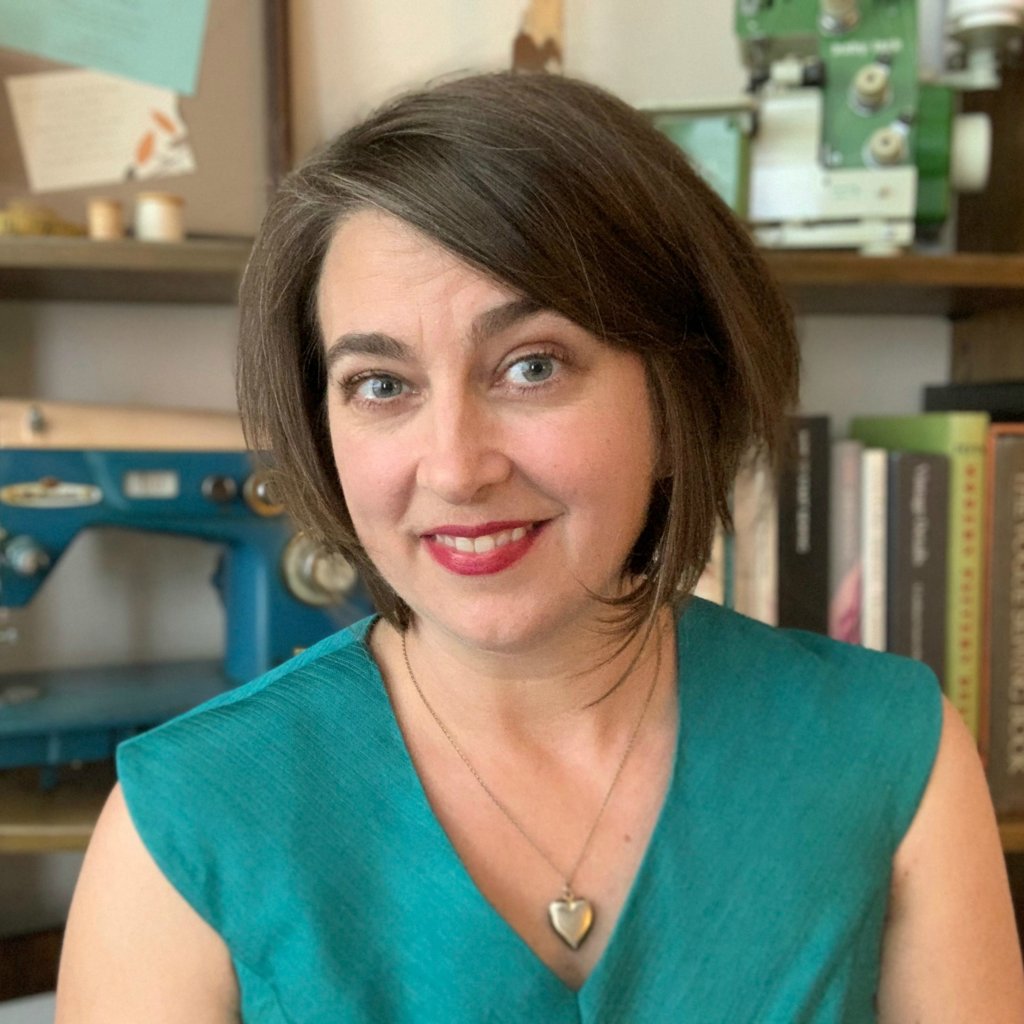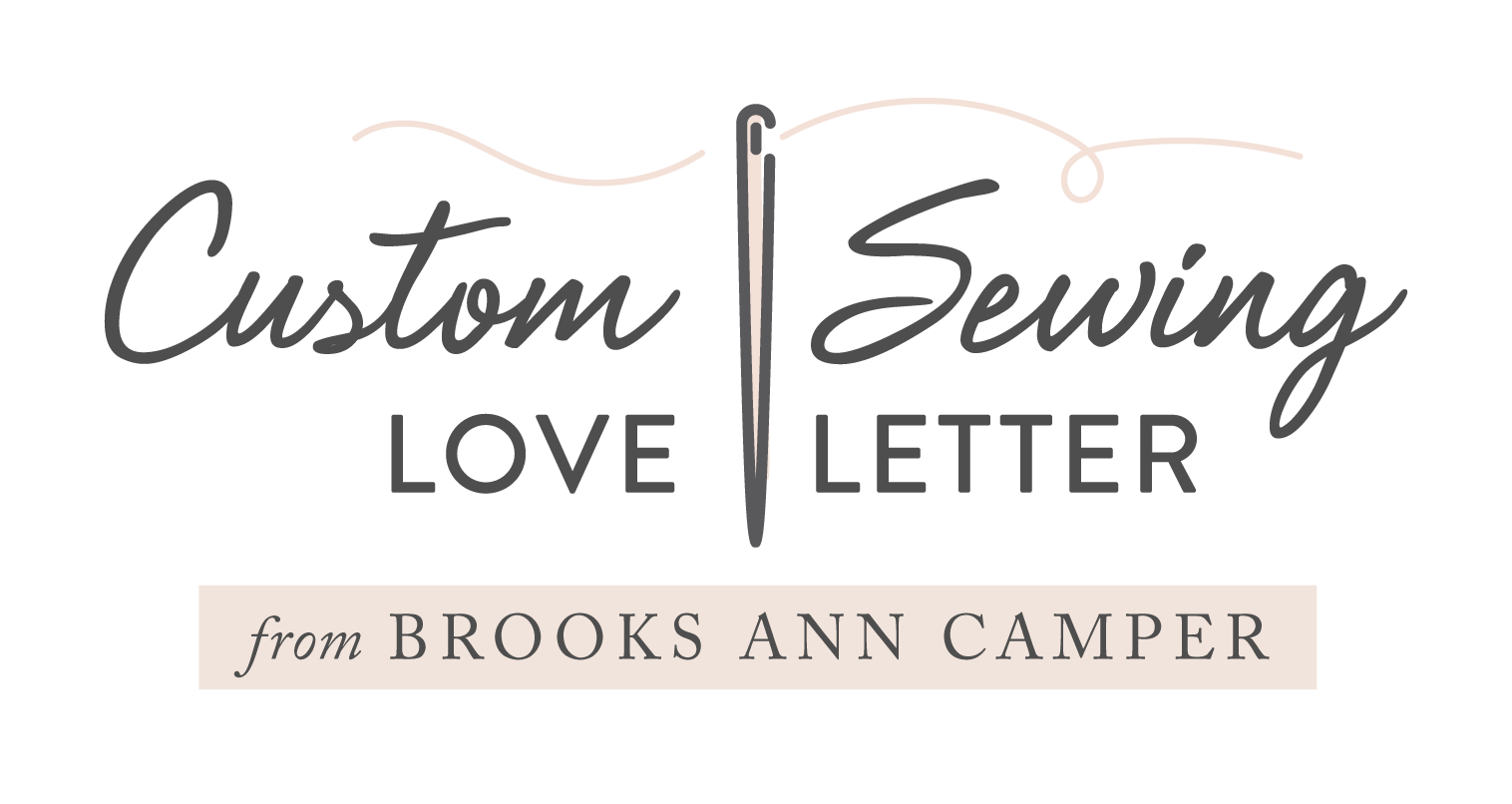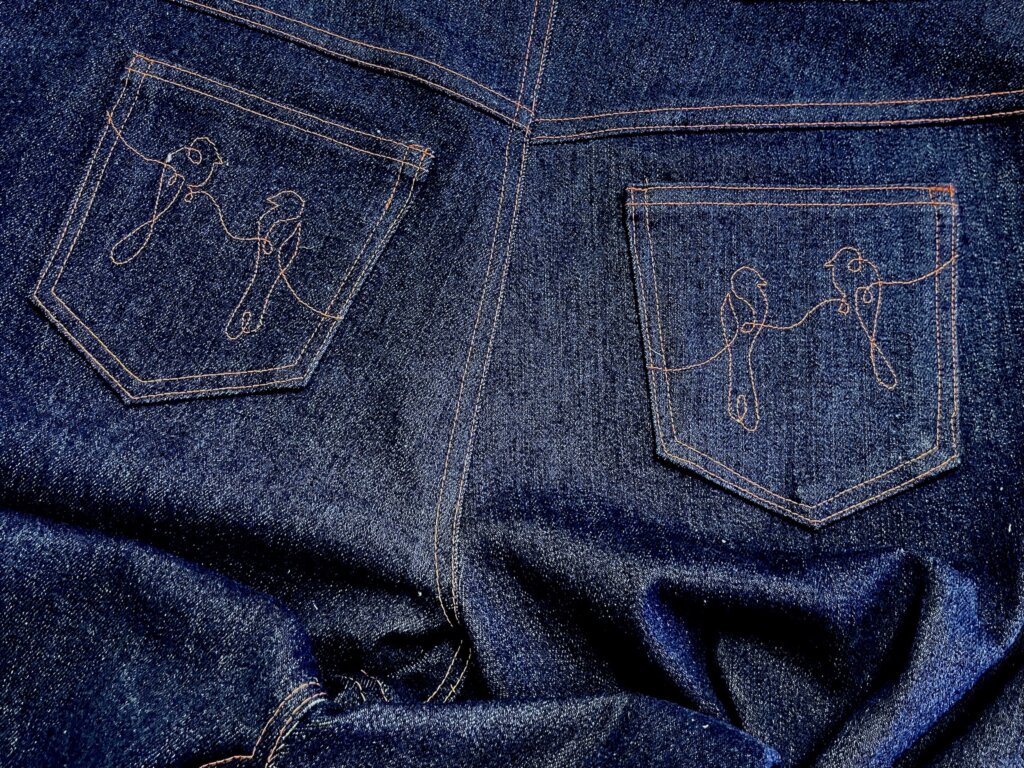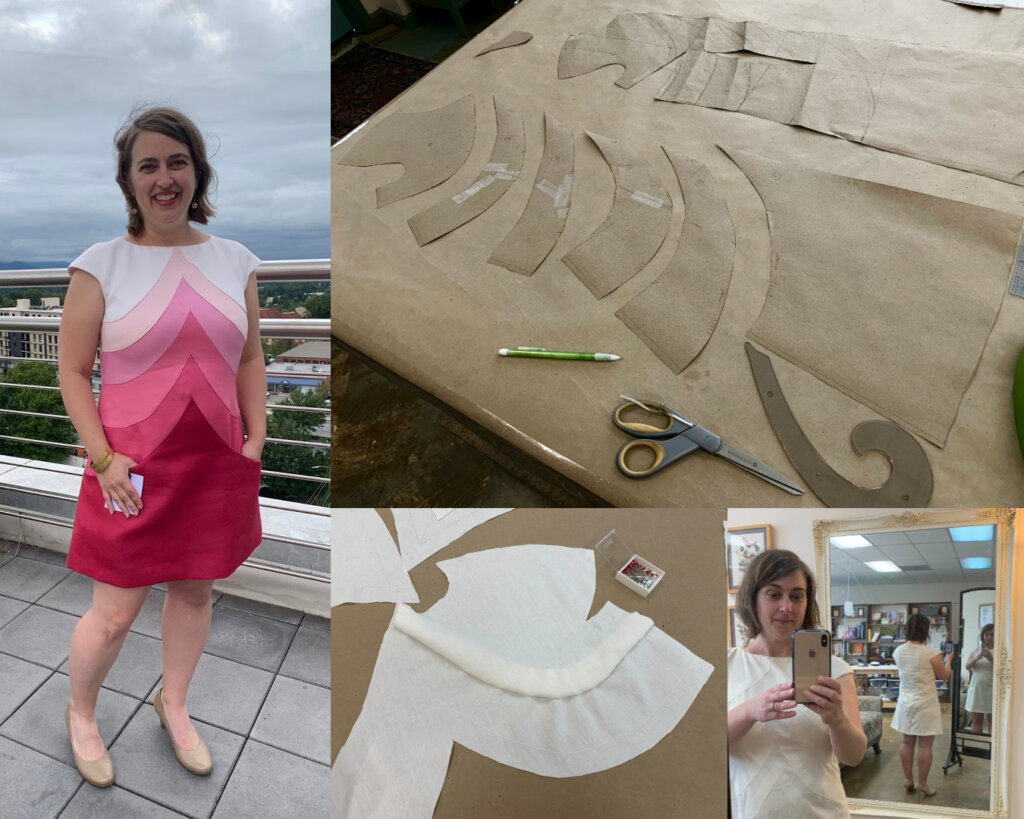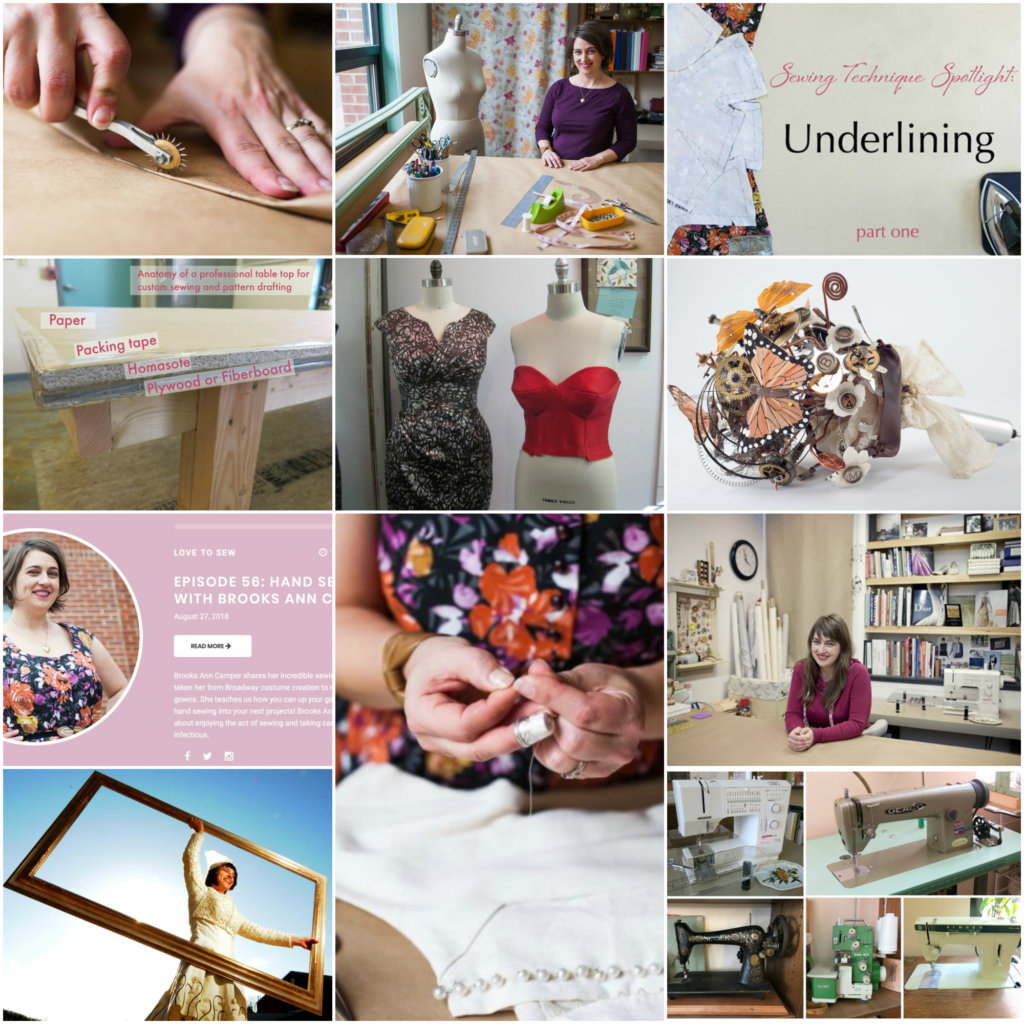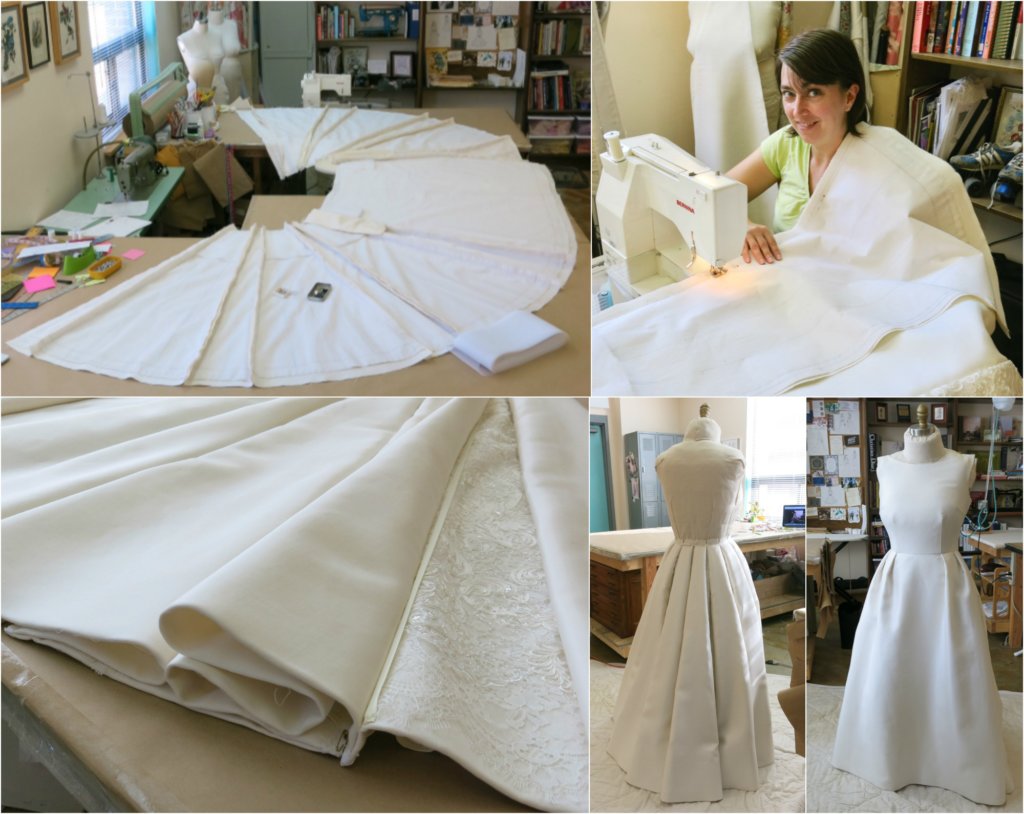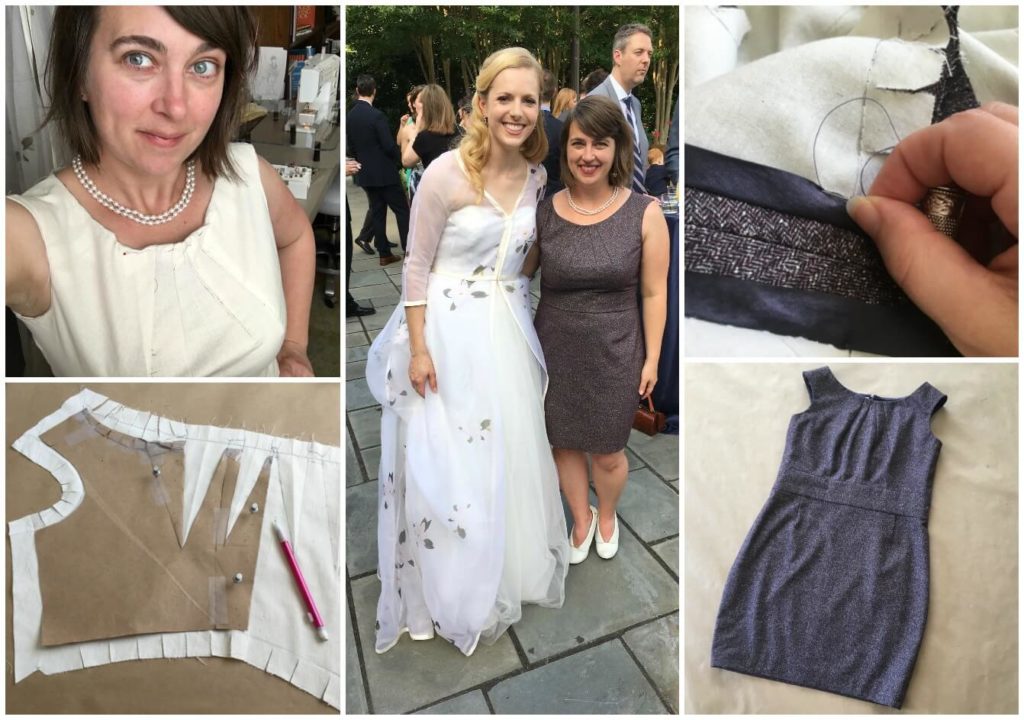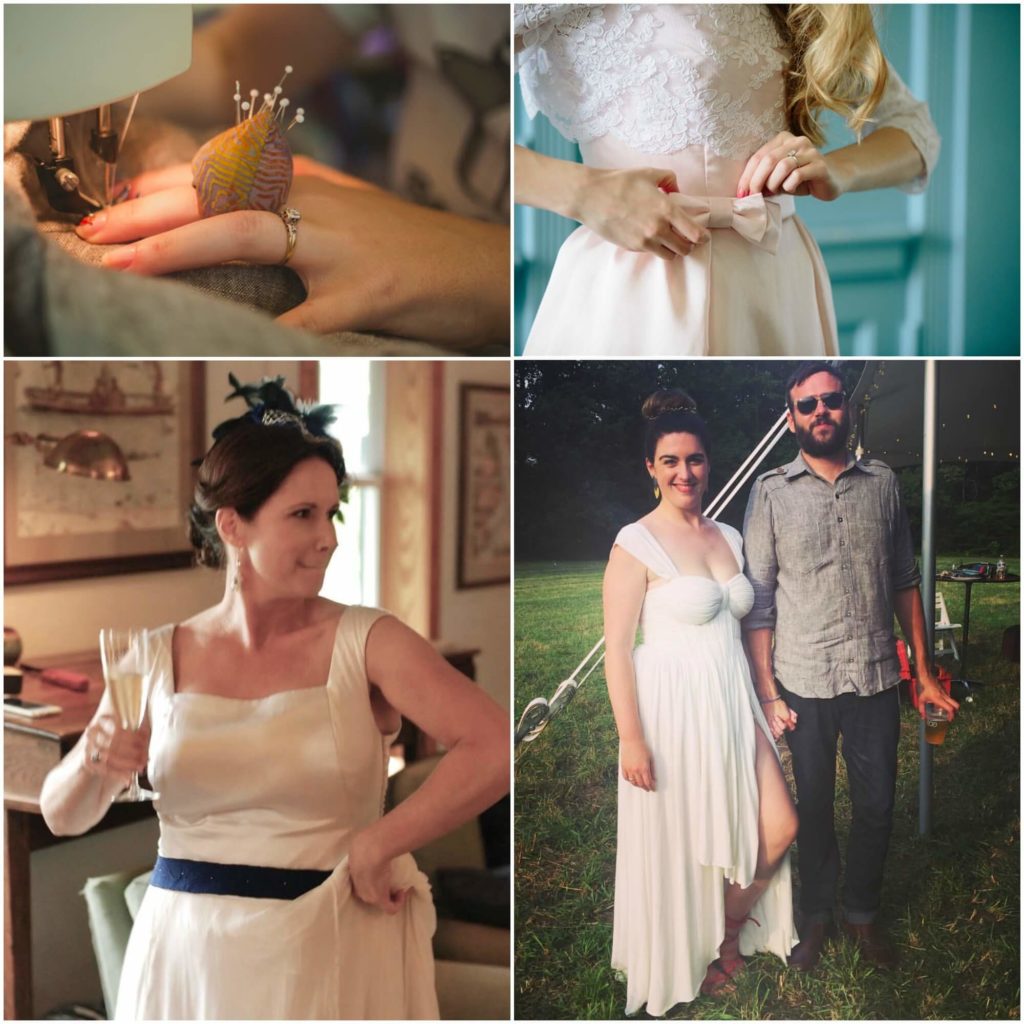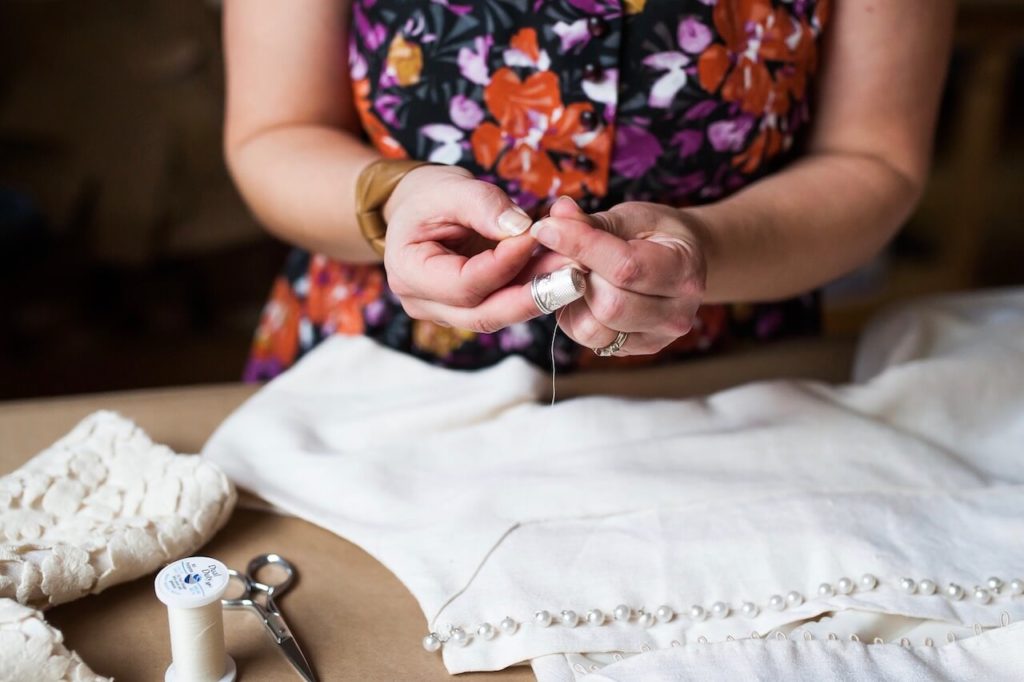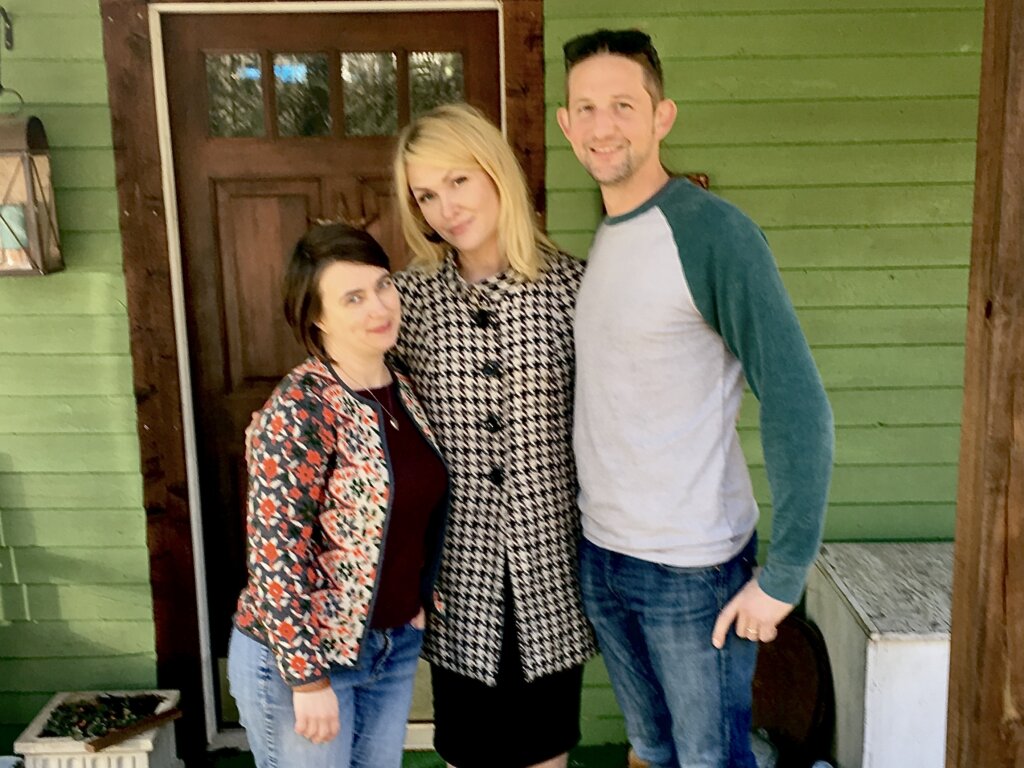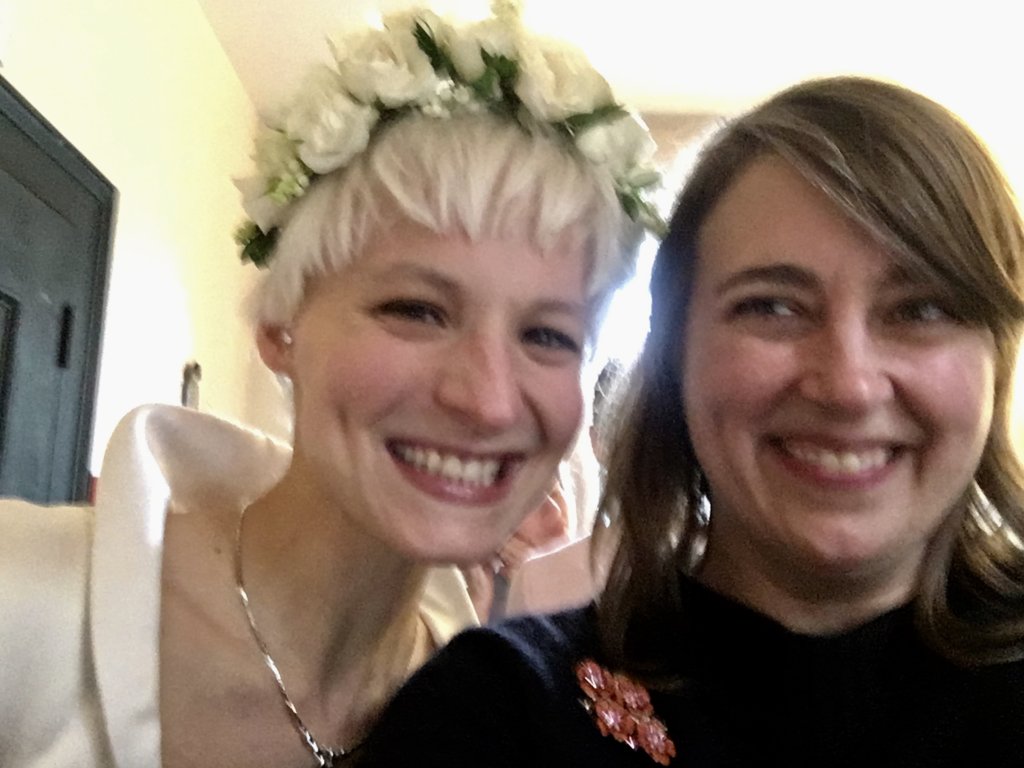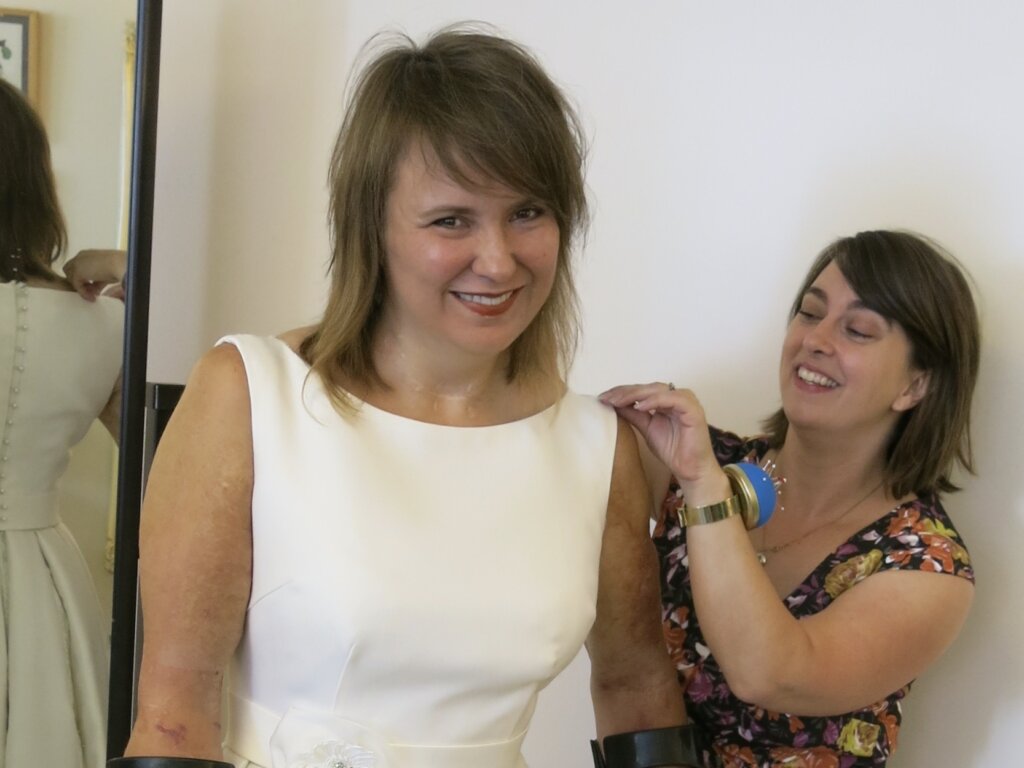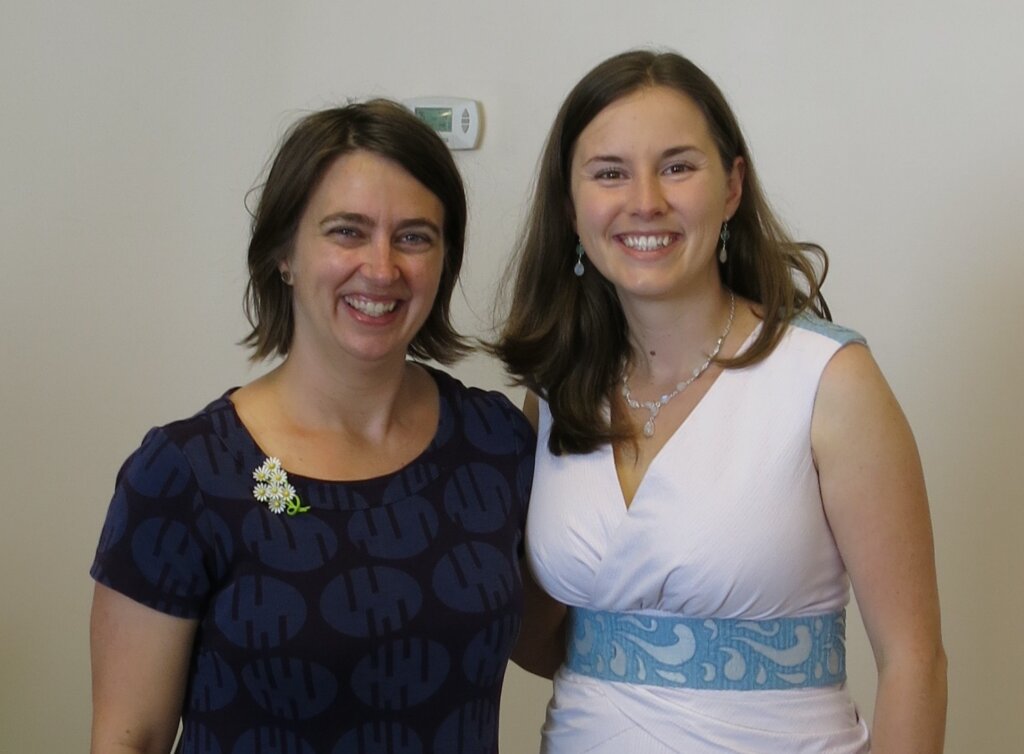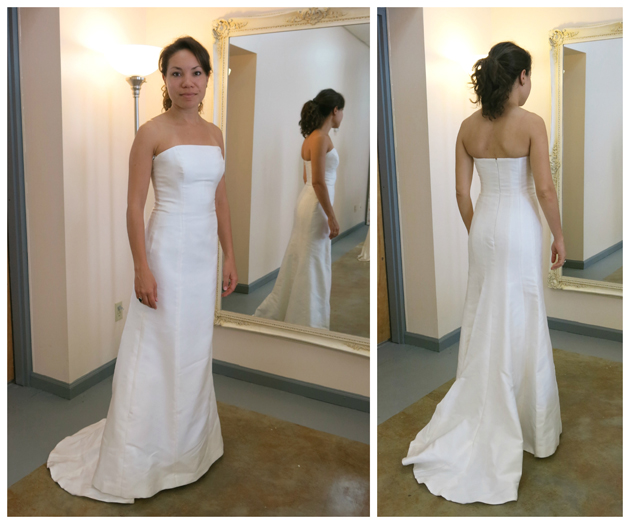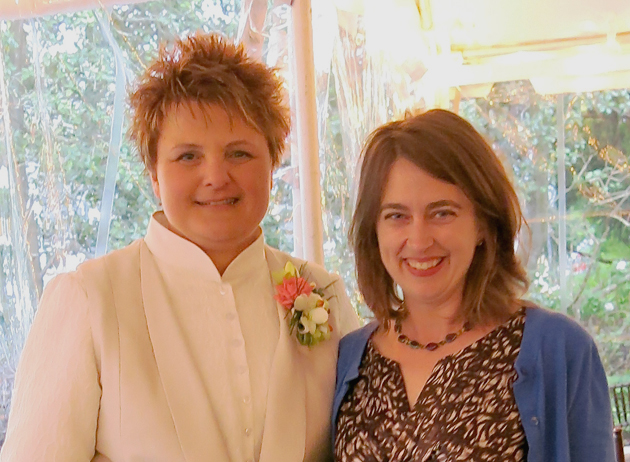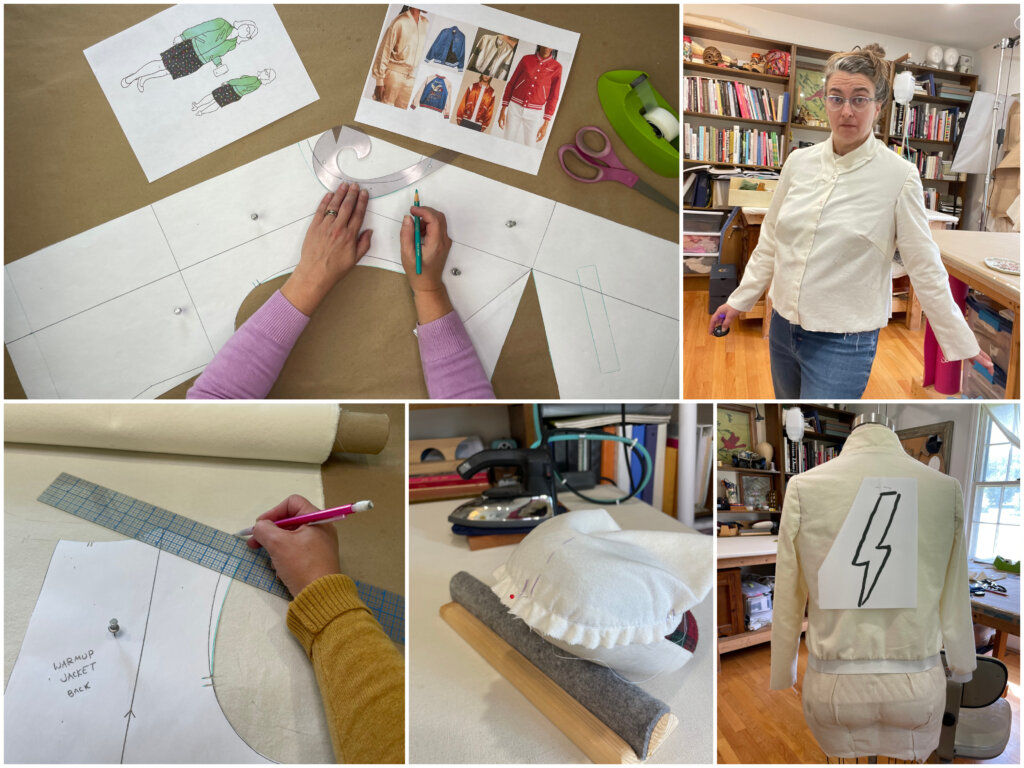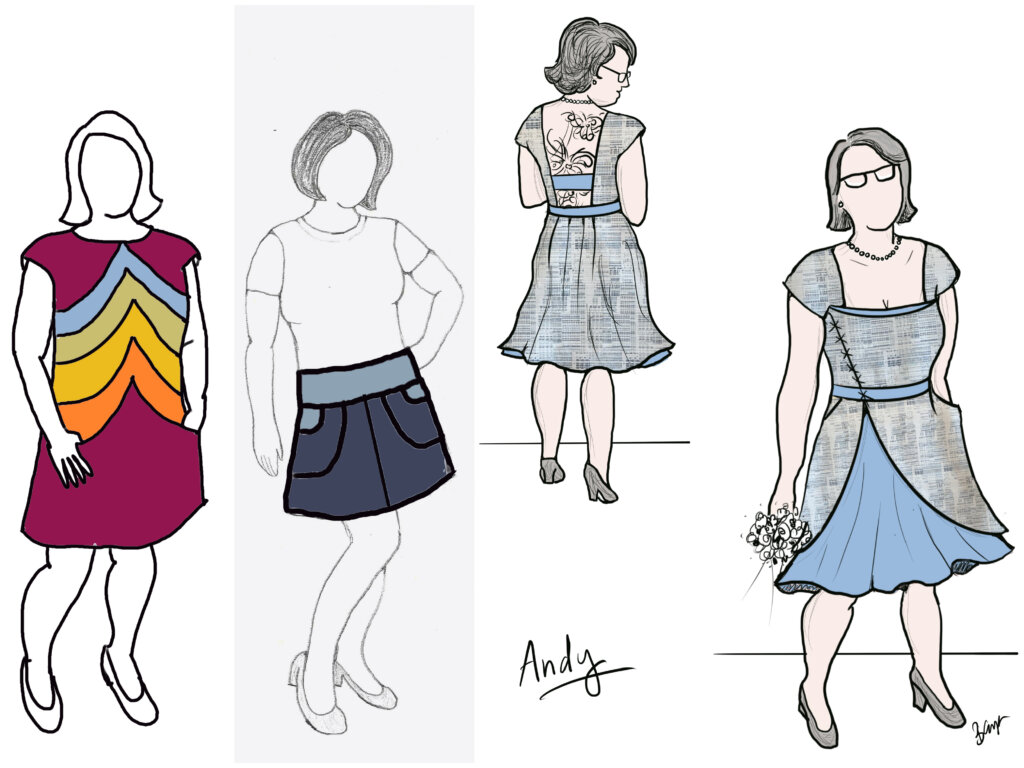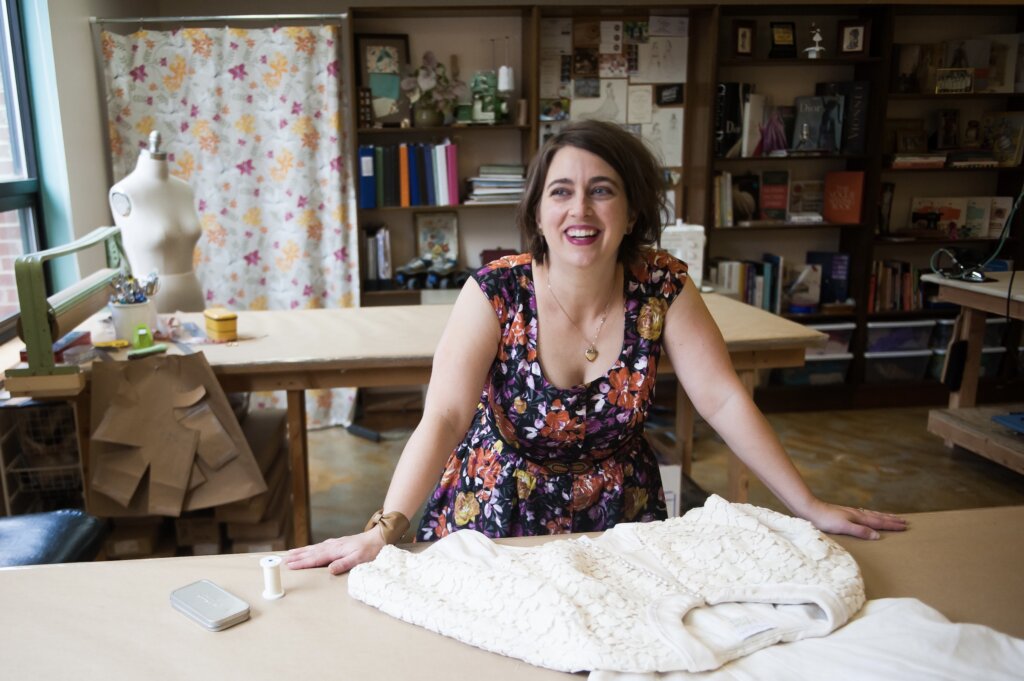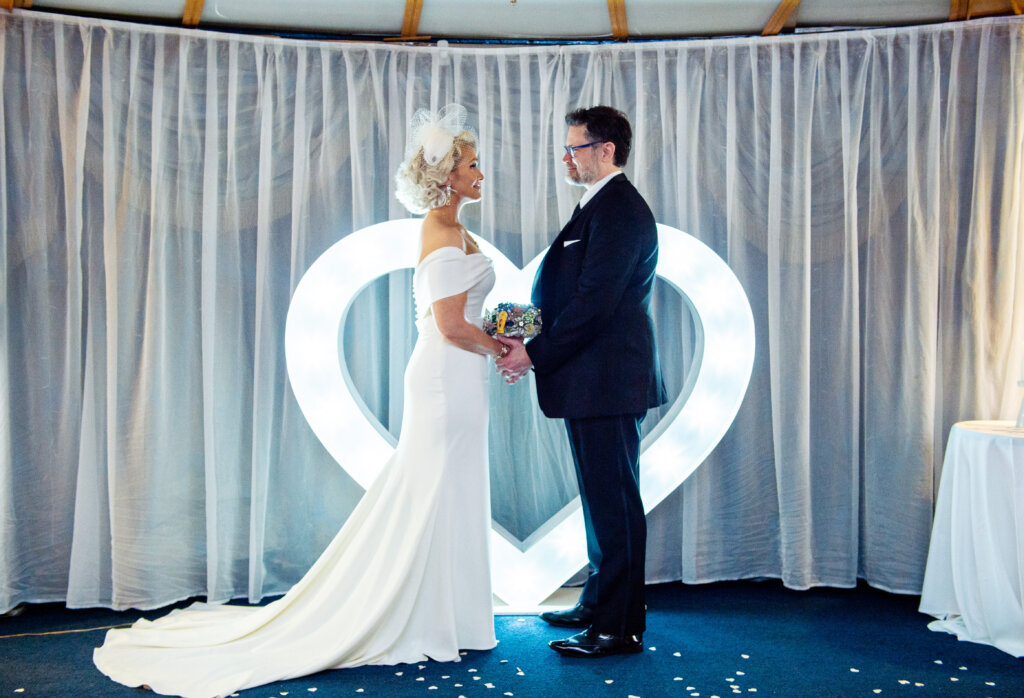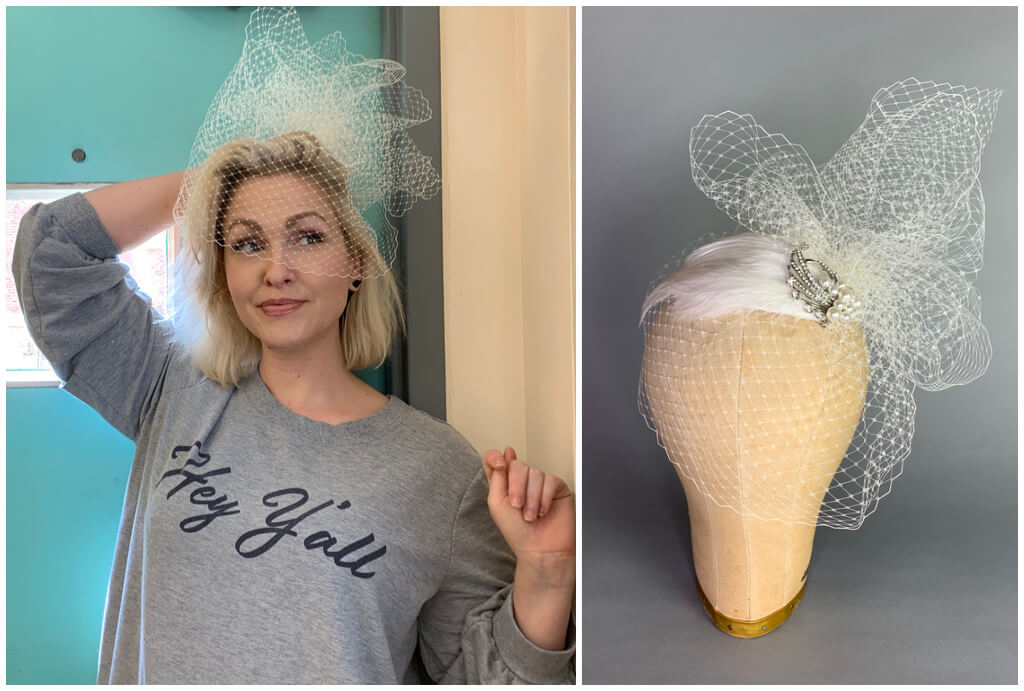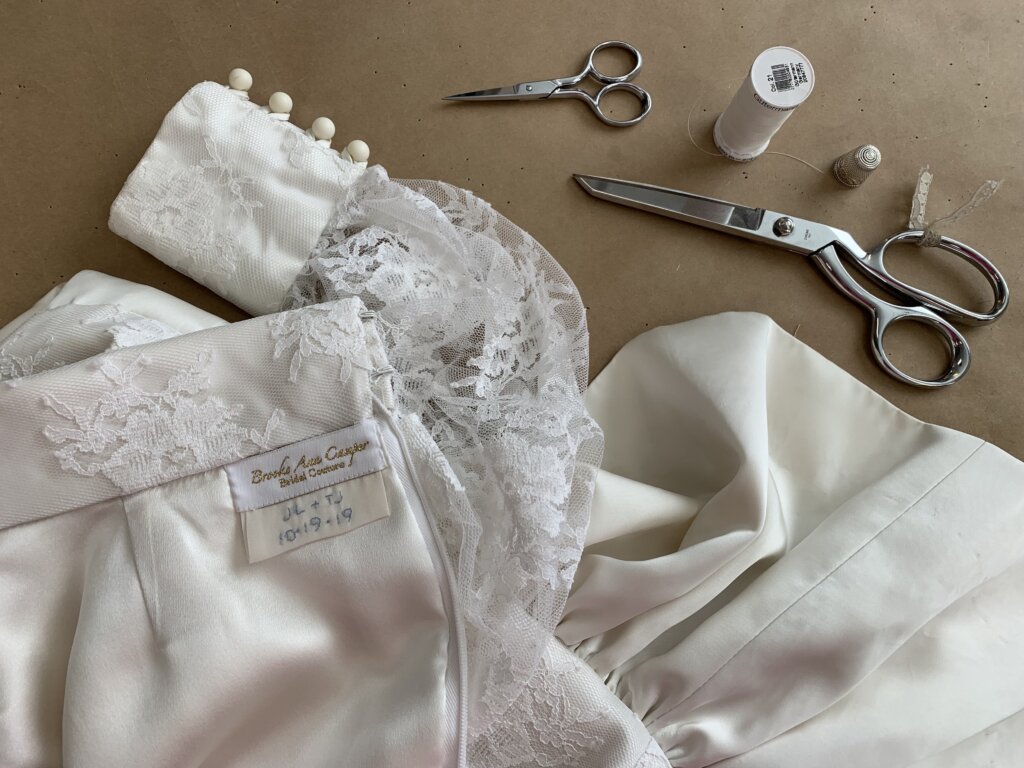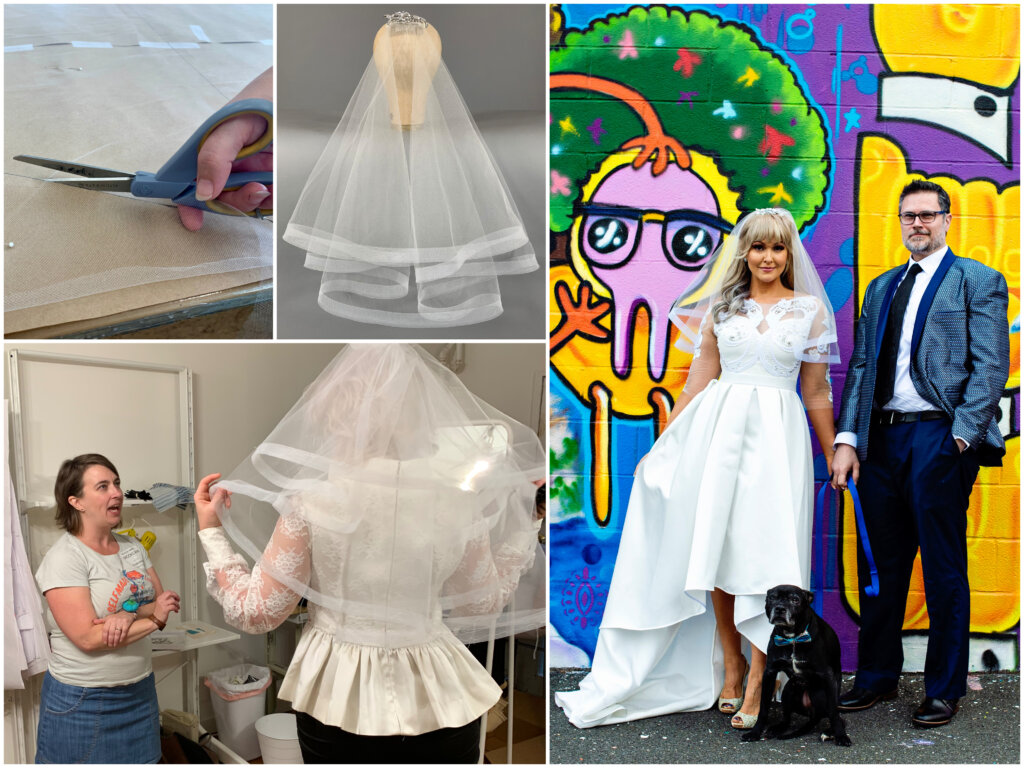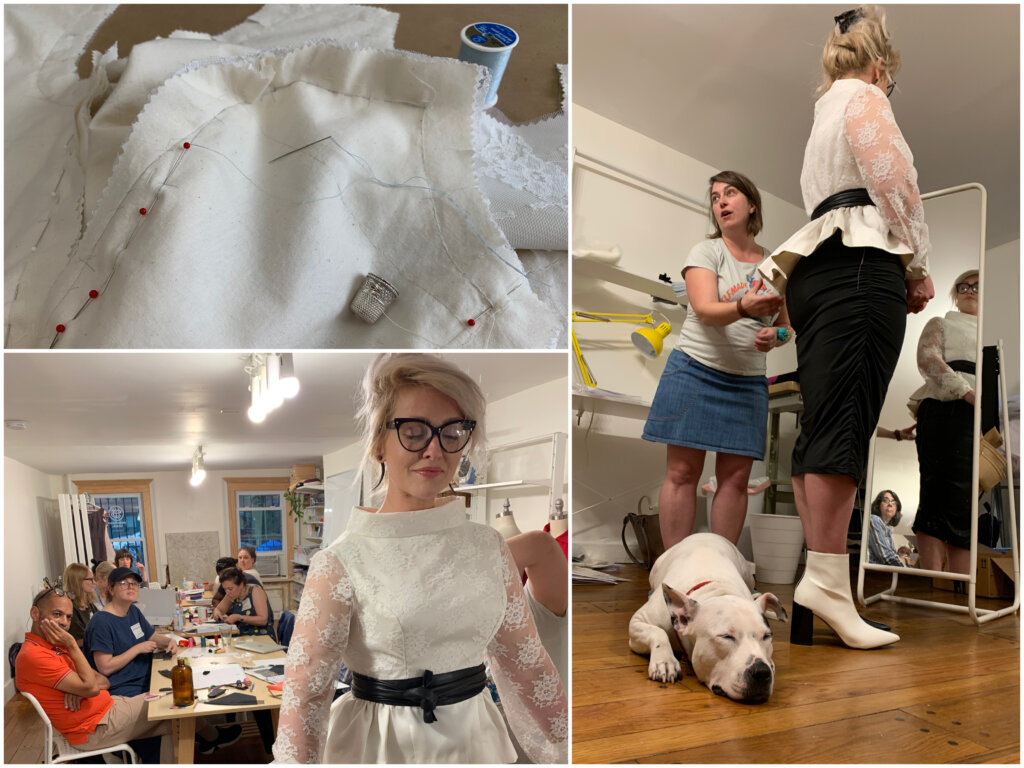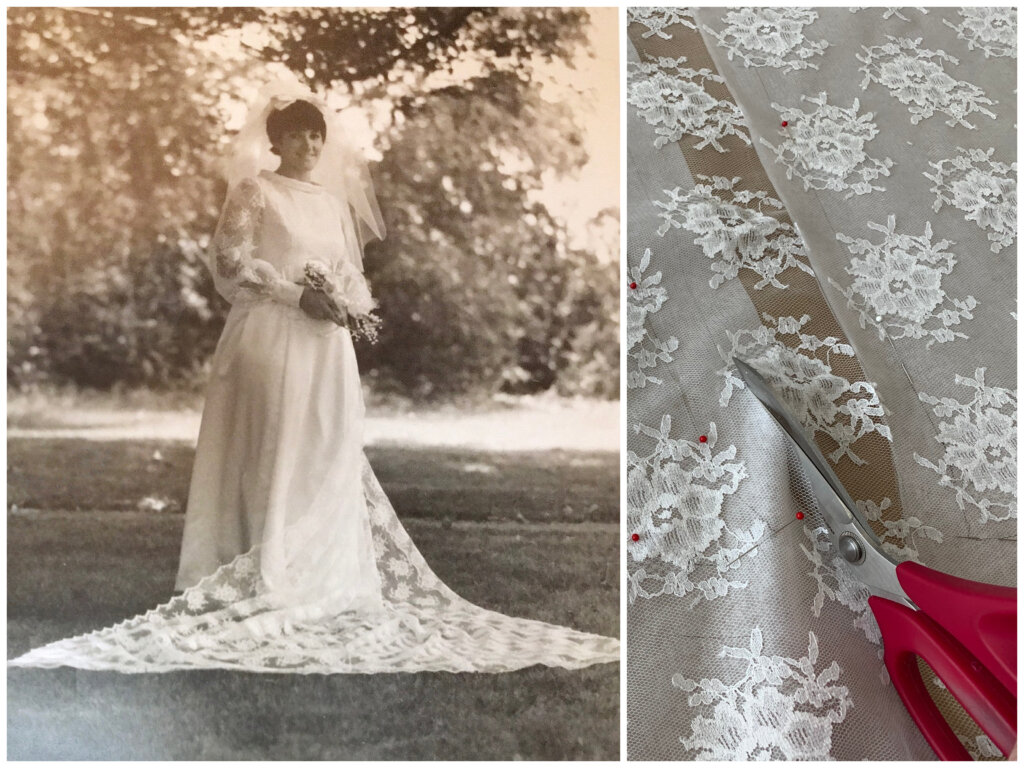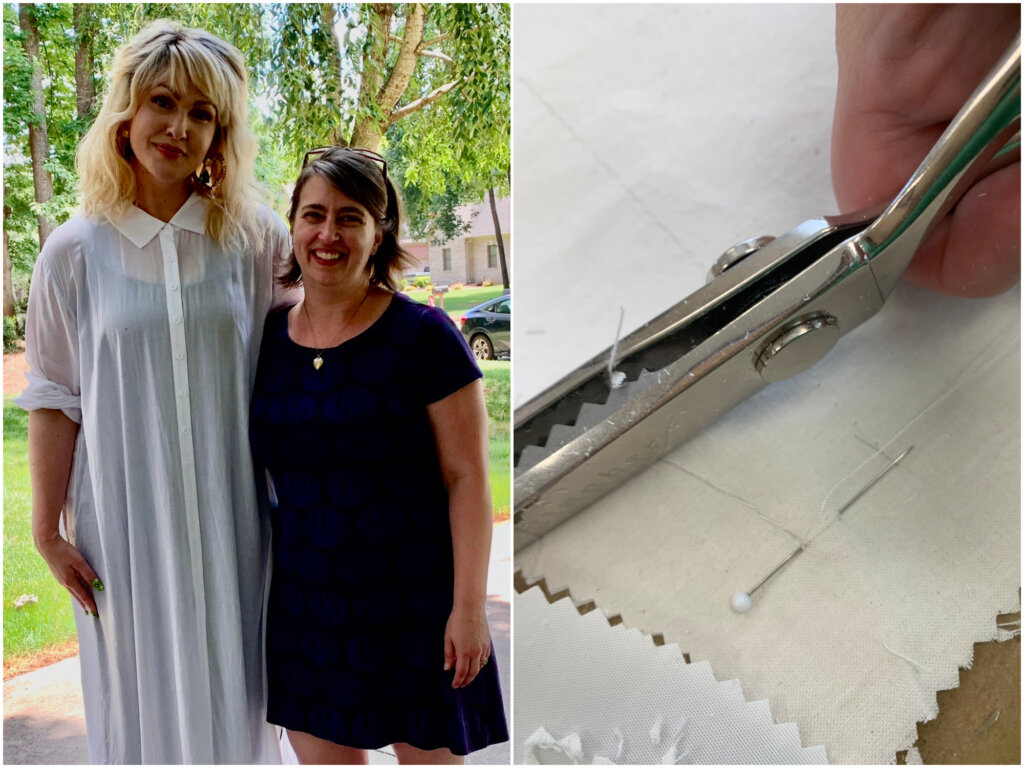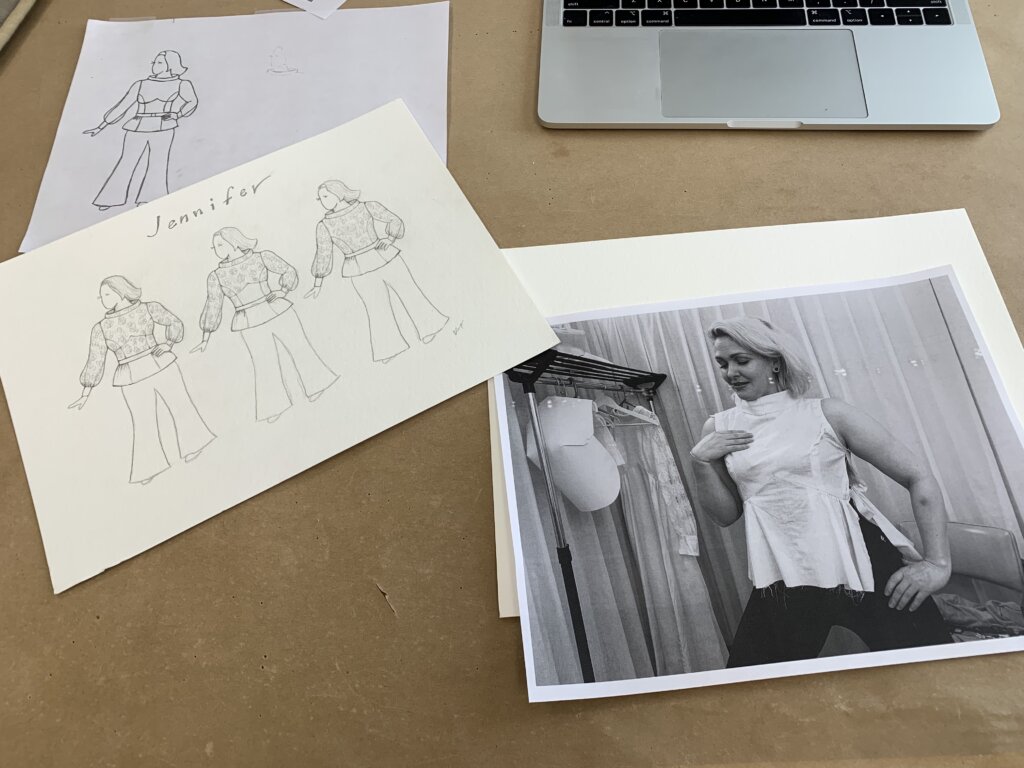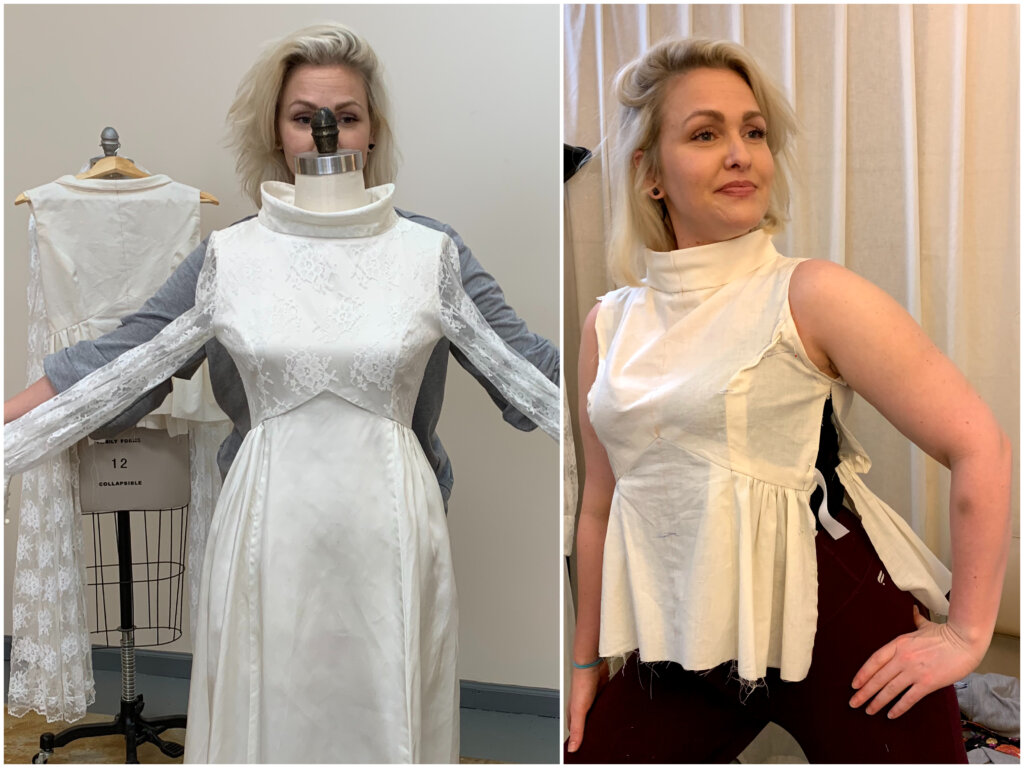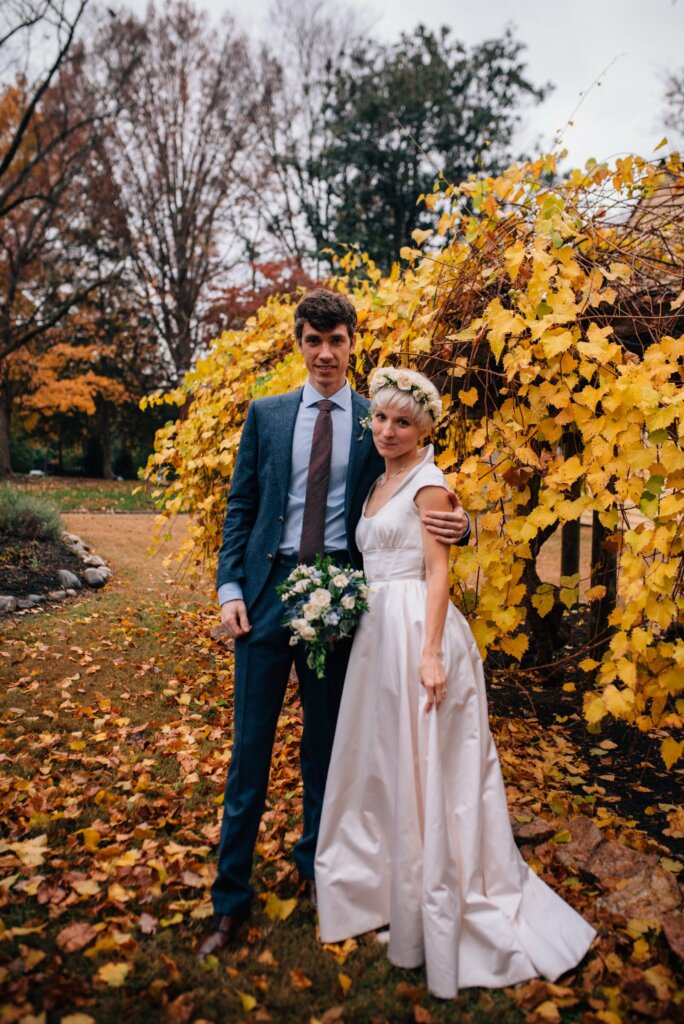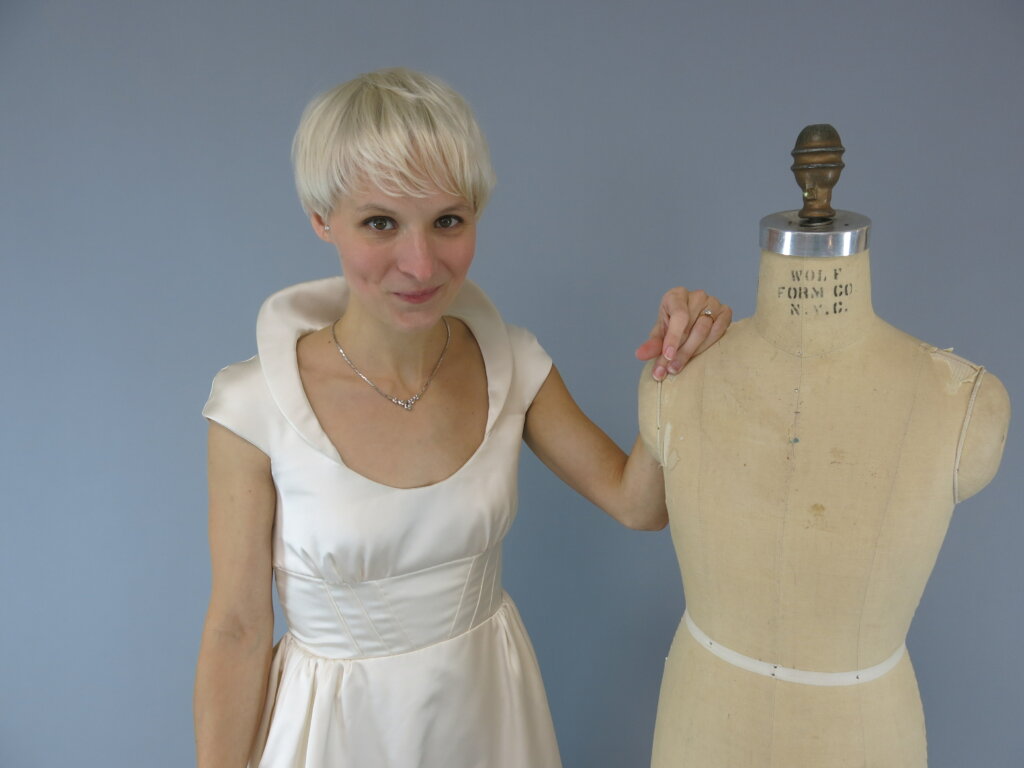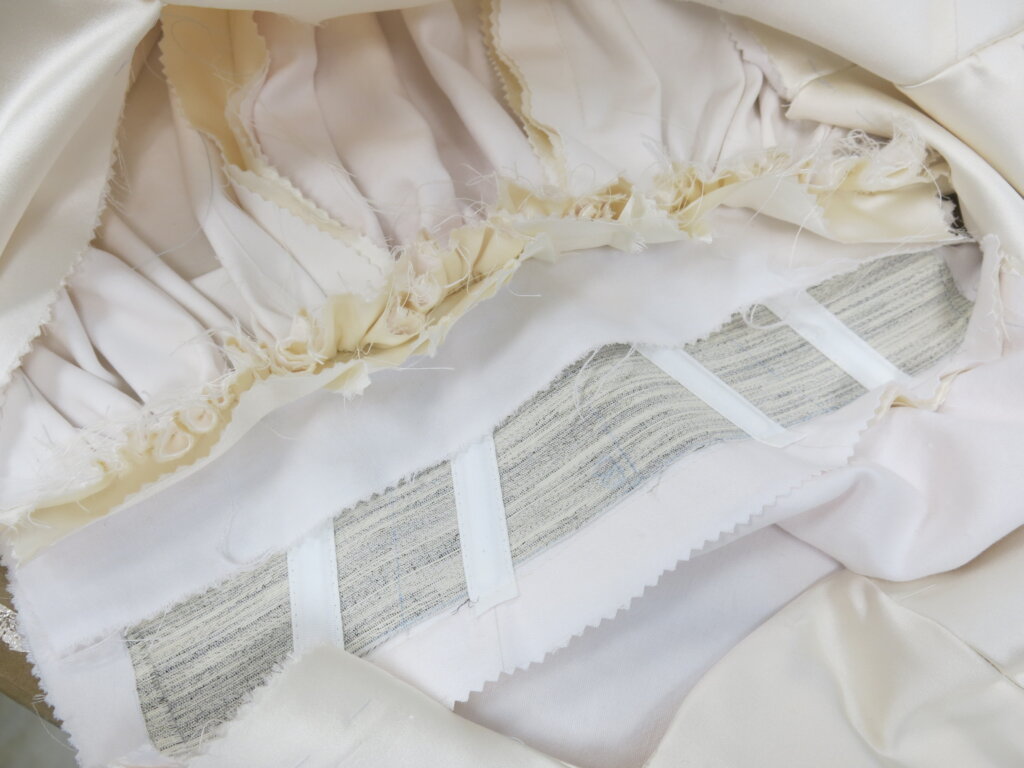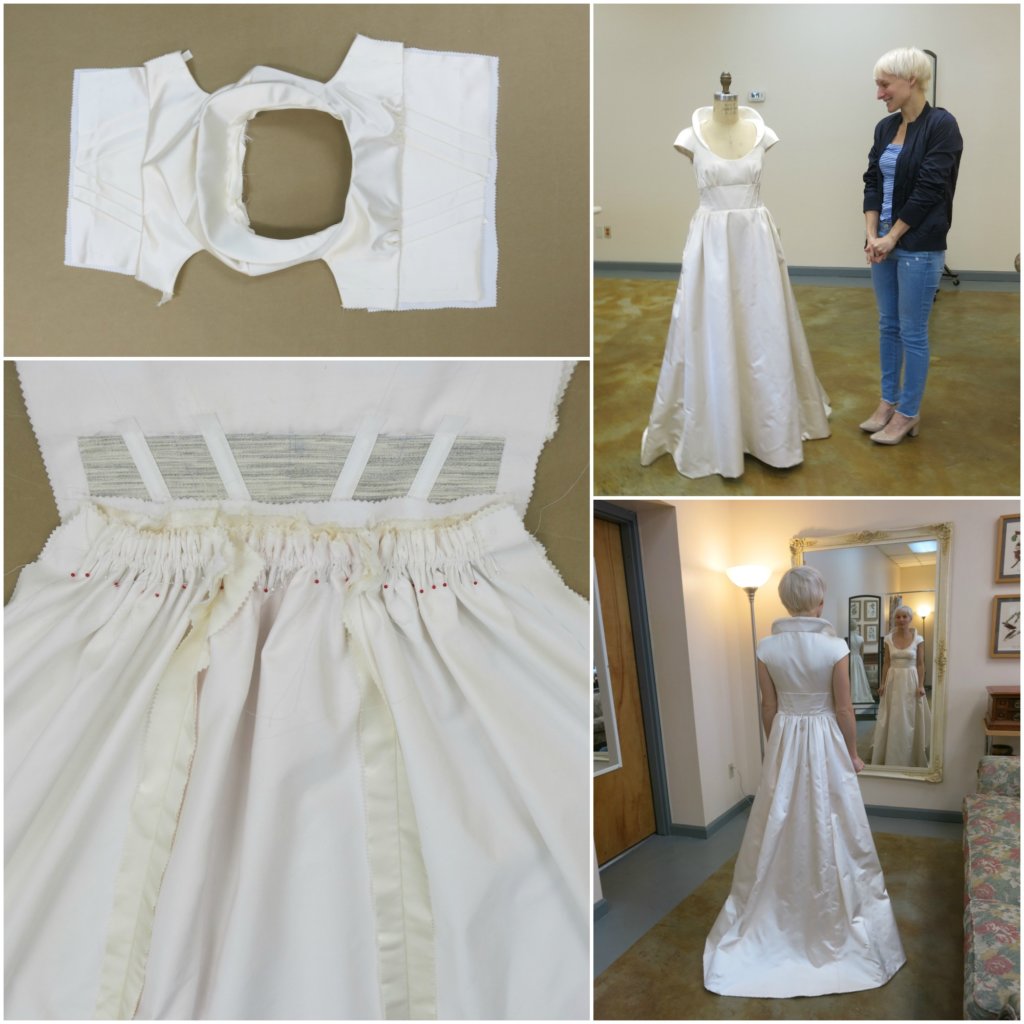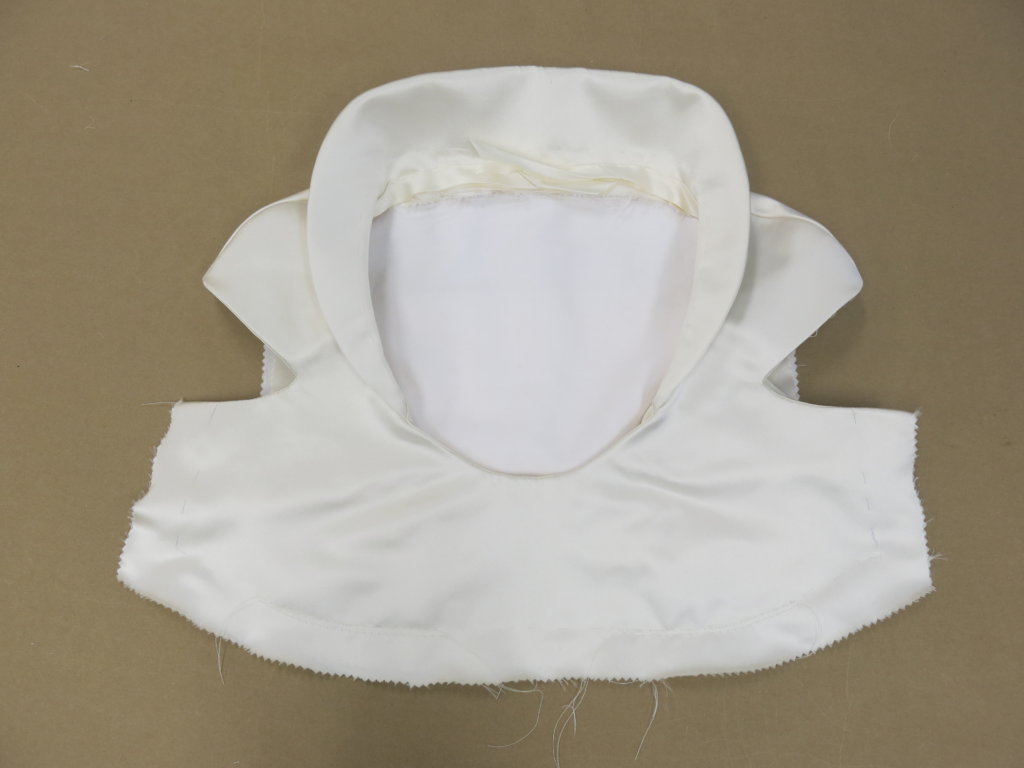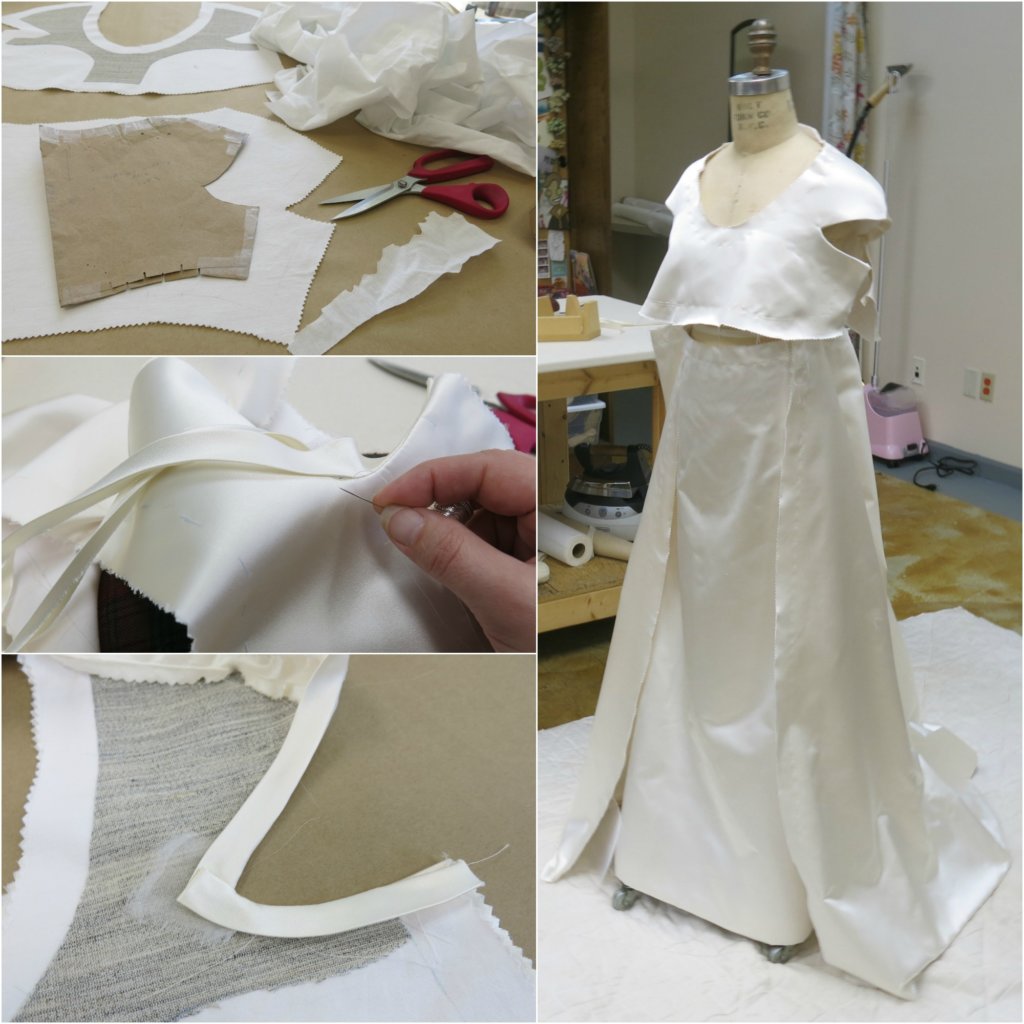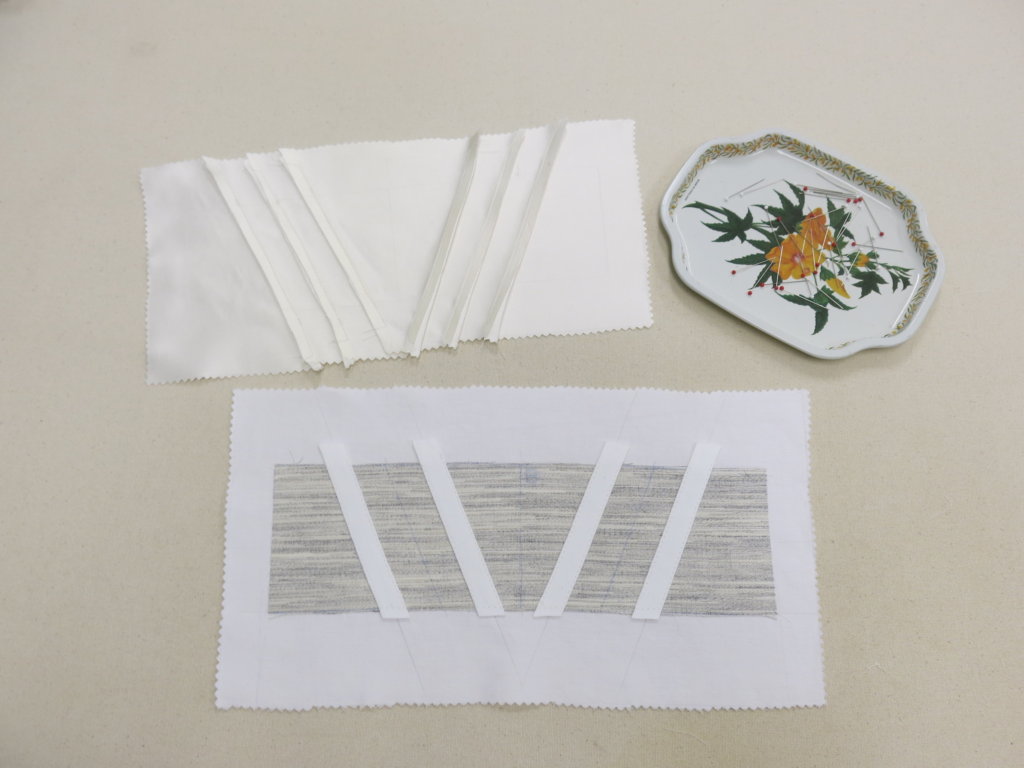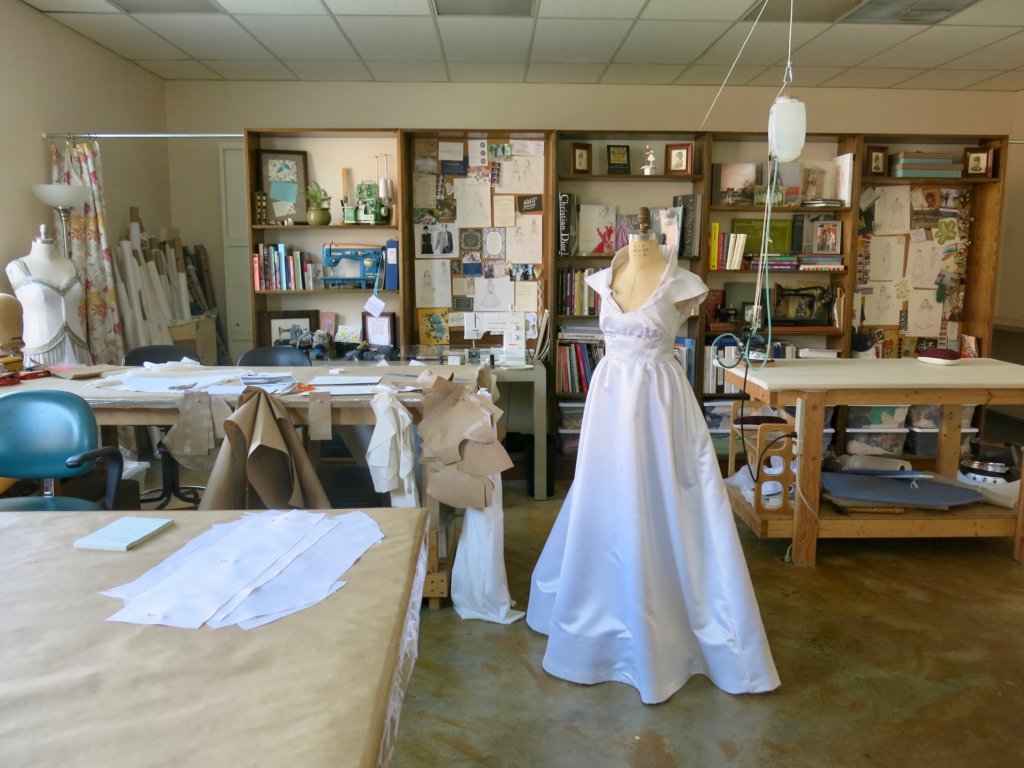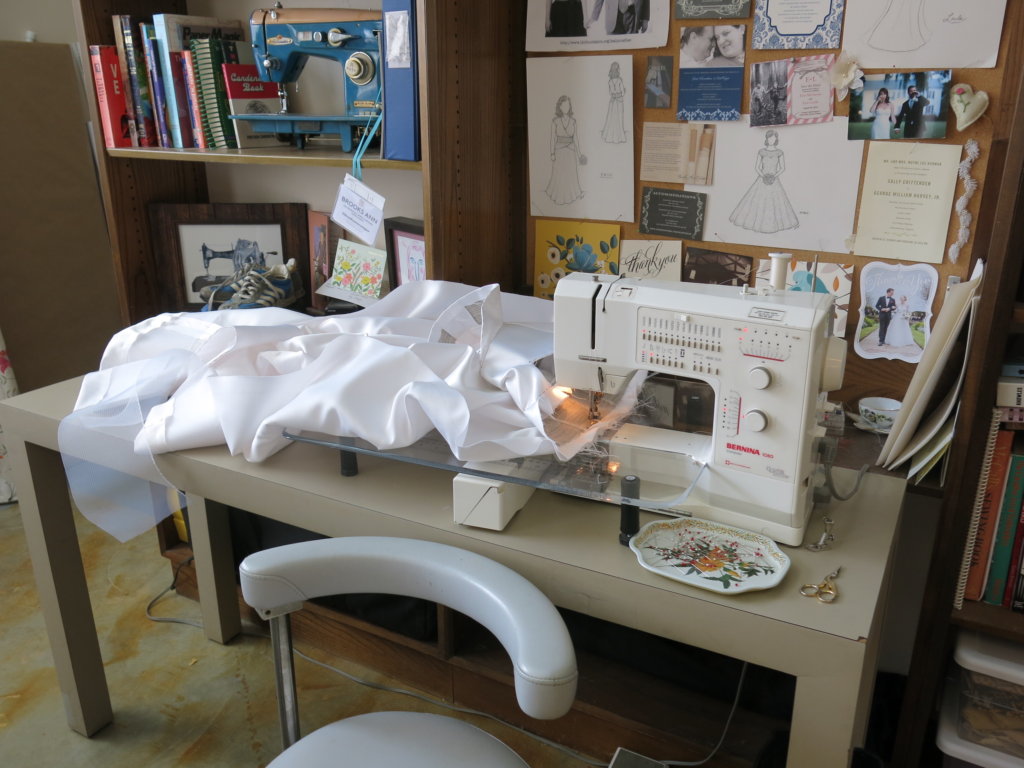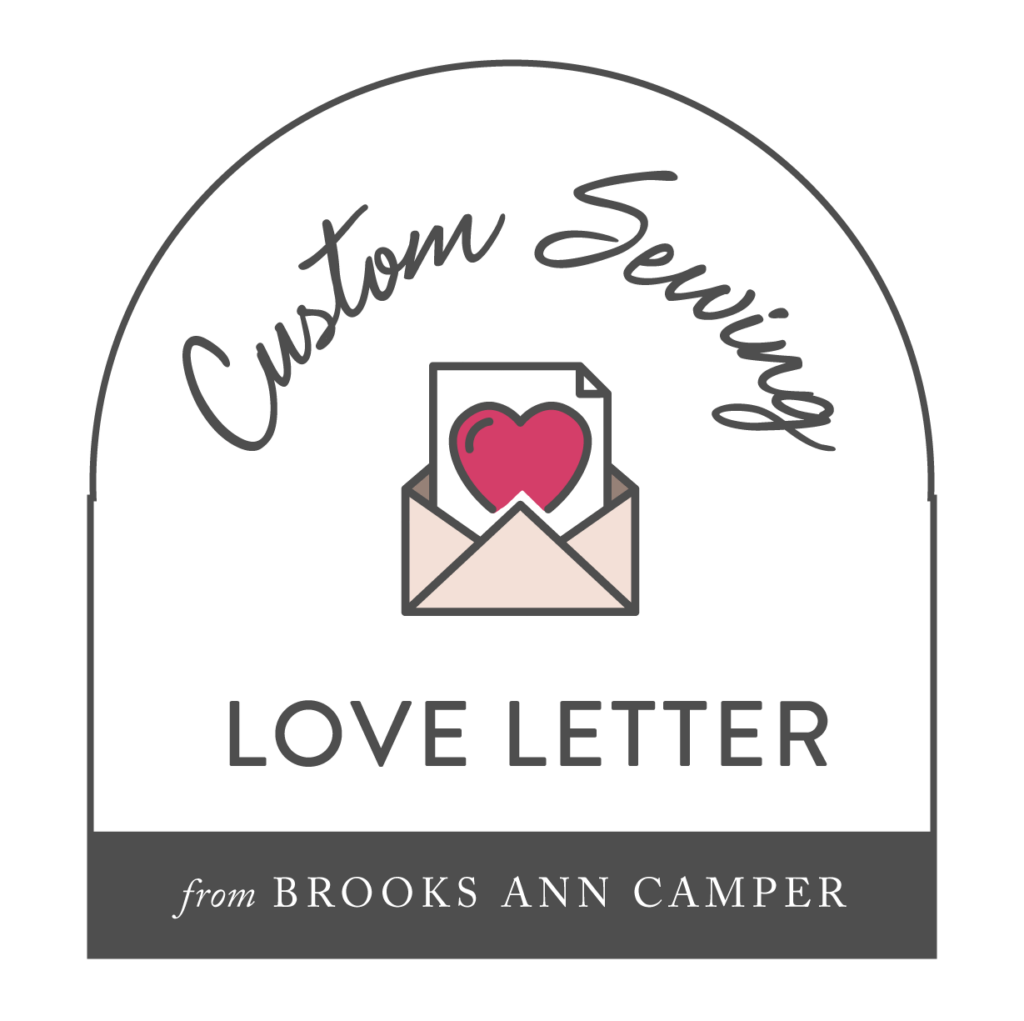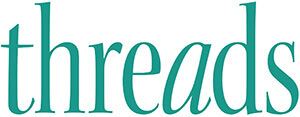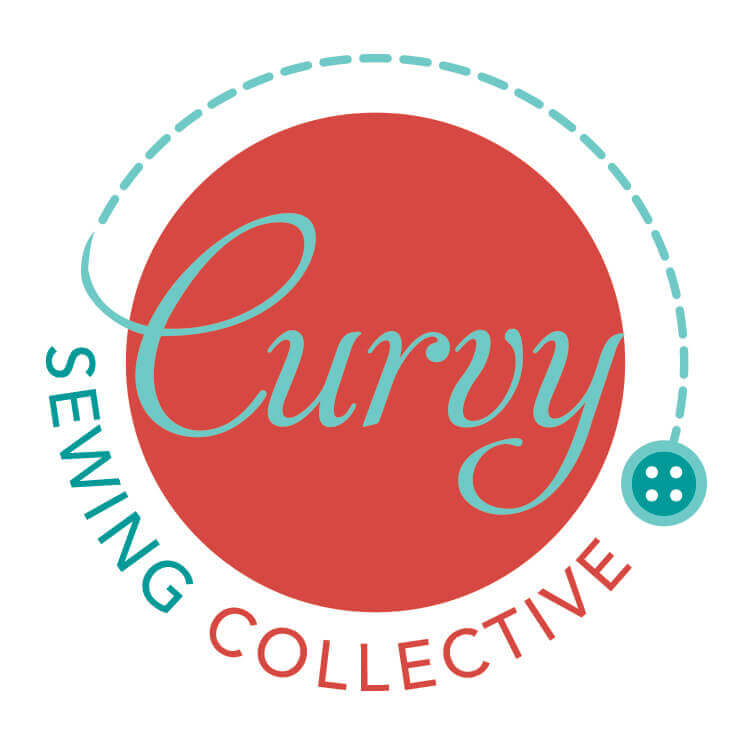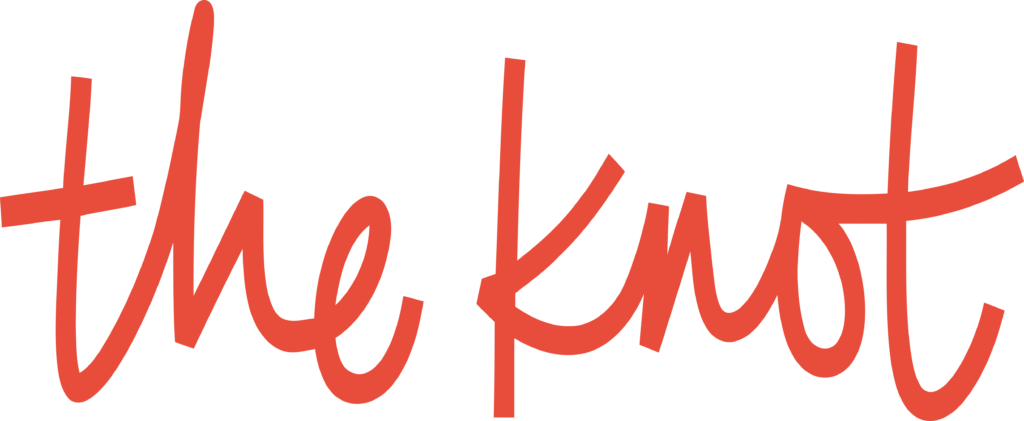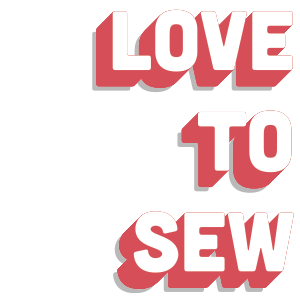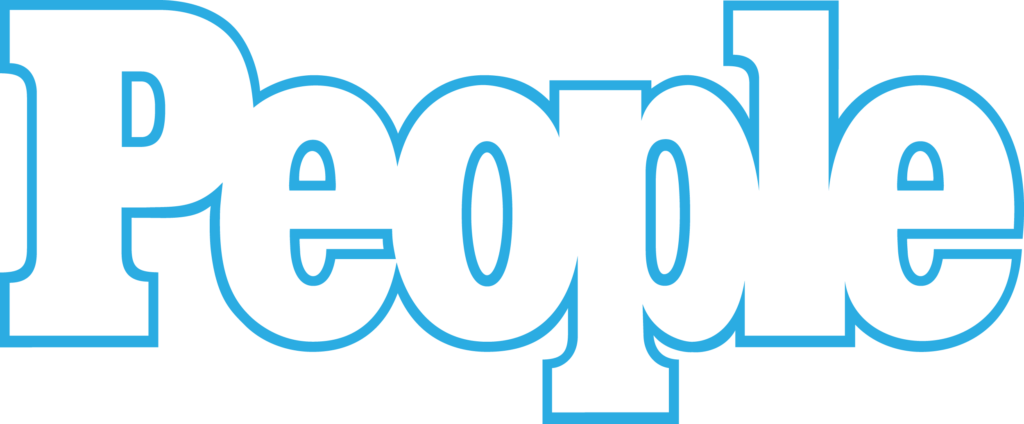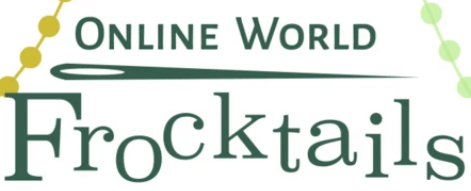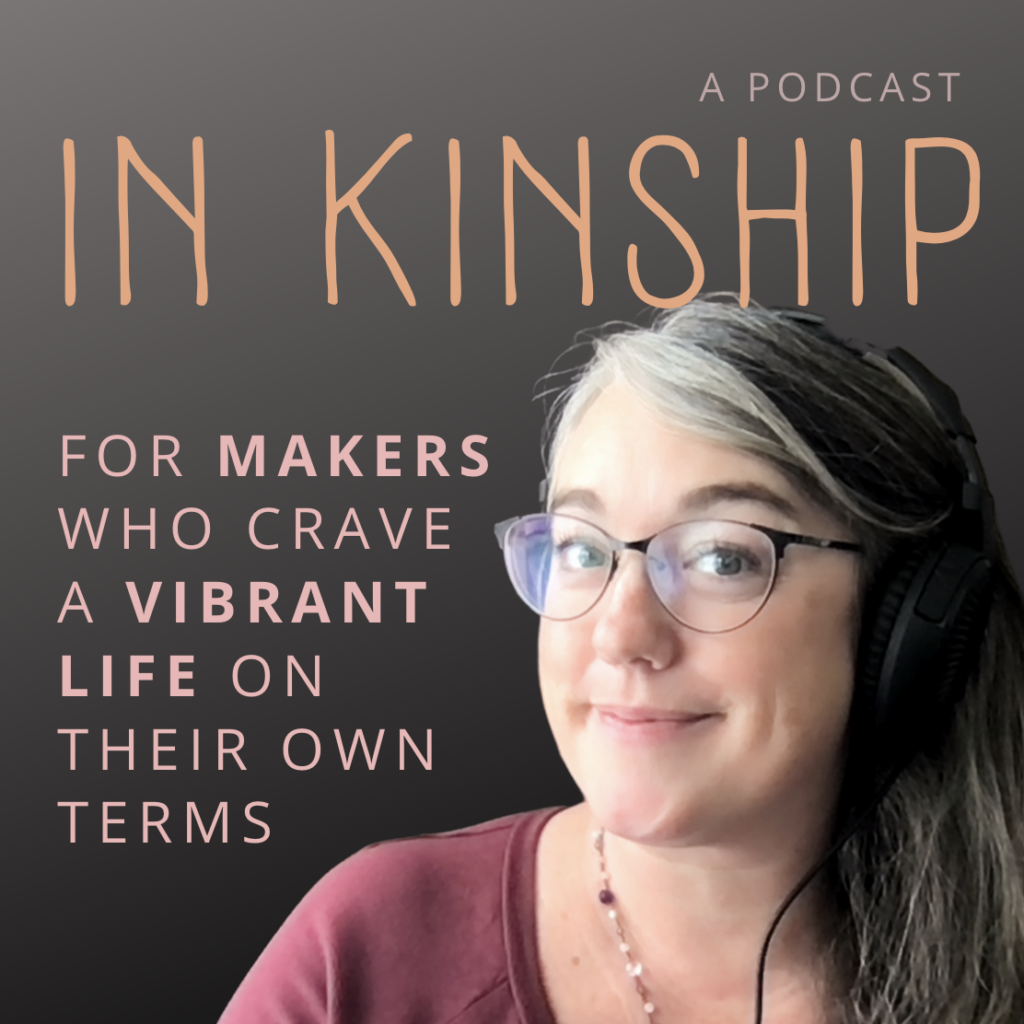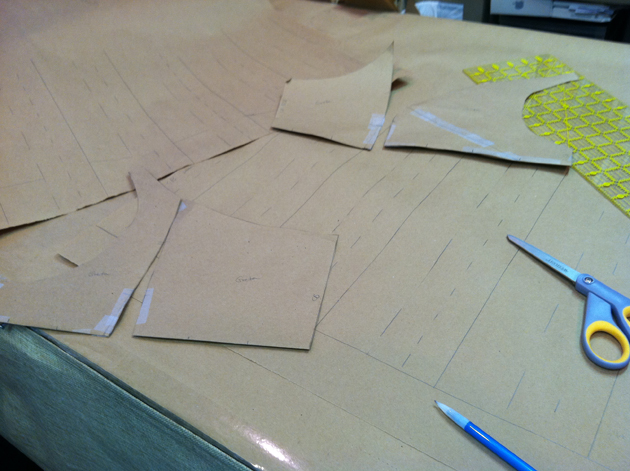 When drafting one-of-a-kind dress patterns, there are many ways to achieve a similar result. Each patternmaker develops his or her own preferred method. Working in different workshops and schools throughout my career, I have learned a wide variety of drafting and cutting methods. Now that I work for myself, I can choose what works best for me!
When drafting one-of-a-kind dress patterns, there are many ways to achieve a similar result. Each patternmaker develops his or her own preferred method. Working in different workshops and schools throughout my career, I have learned a wide variety of drafting and cutting methods. Now that I work for myself, I can choose what works best for me!
I use brown paper patterns with my cut edge as my stitch line, a technique I learned when working at Yale. When I make pattern alterations, I fold and cut and tape the paper to achieve my perfect shape.
At this point on Greta’s pattern, I took my rough patterns and did what is called “truing them up”. Making a pattern true, is making sure that all of your pattern pieces match up perfectly. All edges should have graceful lines. All seams, darts, tucks and pleats must fit together perfectly. This is also the time when you add hashmarks to help you line up your pattern pieces when you sew.
For the pleating of the skirt, (though I got a very rough estimate from the rough drape) I did most of my patternmaking directly onto the paper. There’s a lot of math involved when drafting the perfect pleated skirt. You can see in the photo above where I used different types of lines to mark the inside, place and fold of each pleat.
Once all of my patterns are trued up, I am ready to mark and cut my muslin pieces for Greta’s mockup dress. I work on a large padded work table that I can pin into. I lay out my fabric in a single layer and transfer all of my stitch lines and hashmarks with a pencil. I then take a clear ruler and mark out my seam allowances.
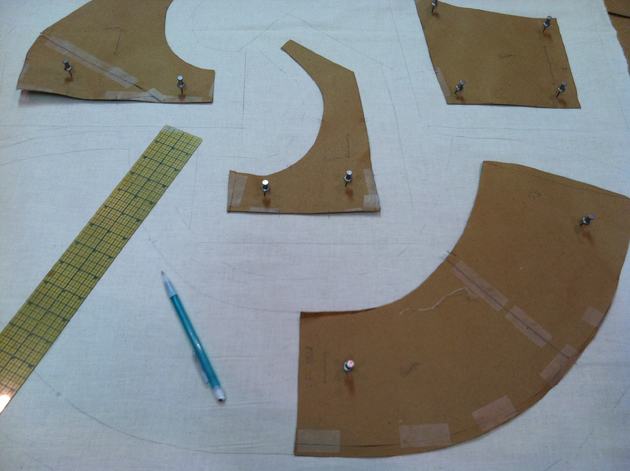 In home/commercial patterns, often the seam allowance is the only line that you transfer. In couture, the stitch line is the most important. Seam allowances can vary from piece to piece, if desired.
In home/commercial patterns, often the seam allowance is the only line that you transfer. In couture, the stitch line is the most important. Seam allowances can vary from piece to piece, if desired.
When I’m marking for a mockup, I always leave generous seam allowances. That way there’s plenty of extra fabric to play with when we have our first fitting!
Greta’s first mockup fitting is this weekend! I’m so excited! That said, I still have a blog post or two to share before I’ve got you caught up on the process… More soon!


